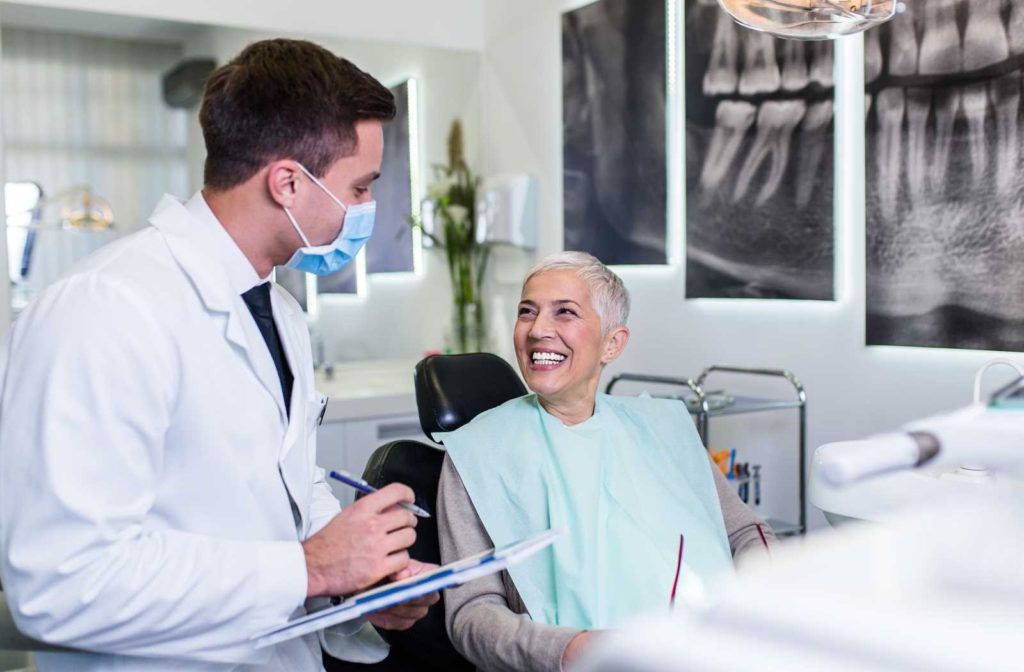Father Time comes for us all. But sometimes he has the nerve to act before his appointment. As we age, we get smile lines and crows’ feet, which may not be a nice trophy for living your best life in your 40s, 50s, and 60+.
Sometimes, our faces only need a youthful touch-up to give us the profile of a 30-something. Fortunately, that touch-up is available through an injection — if you can find a doctor (or dentist) you trust. BOTOX has withstood the test of time and proven to be an effective treatment for wrinkles.
What Is BOTOX?
BOTOX is an injection that uses a toxin, technically, to reduce the responsiveness of a muscle to nerve stimulation. The toxin’s name is onabotulinumtoxinA, coming from a type of bacteria, the same type that causes food poisoning. But that’s only if it’s ingested! When isolated and injected into muscles, the neurotoxin has a much more beneficial effect.
How BOTOX Works
Your muscles contract or flex because they receive signals from the brain, as they pass through the central nervous system. There’s a point where the nerve ends, and the muscle begins, and that’s where neurotransmitters do their work. These chemical compounds are kind of like keys, while the nerve endings are a bit like the locks.
BOTOX’s chemical makeup allows it to interfere with neurotransmitters coming from the nerves. That way, the muscles just don’t move as much, despite the brain’s signals. To return to the analogy, BOTOX covers the locks so the keys can’t unlock them. For this reason, BOTOX fits into a category called neuromodulators.
How Was BOTOX Developed?
BOTOX found a medical application from the 1970s onward to treat conditions involving excessive muscle contraction.
But in 2002, BOTOX gained approval for cosmetic use by the US Food and Drug Administration. This step allowed for more variable use of BOTOX, and today we can use it for different benefits.
Benefits of BOTOX Treatment
After that FDA approval, BOTOX treatment became widespread for both aesthetic and medical purposes. Qualifying for certification requires an expert handle on the nerve responsiveness of face and jaw muscles. What’s more, your dentist or doctor knows when, where, and how BOTOX can help calm muscle contractions, for the best outcome.
In Alberta, dentists learn how to use BOTOX through a certification program with 6 levels. Level 1 is a lot of theory and anatomy. Level 2 initiates the dentist in necessary skills, like precise injection, diagnosis, and more. Beyond level 2 is learning how to use BOTOX safely in trickier situations, eventually even as a part of surgery.
Skin Firming & Wrinkle Reduction
When it comes to cosmetic skin firming, a dentist carefully targets facial muscles around the eyes and forehead.
Your dentist will have formed a solid base of pharmacological (drug-related) and anatomical knowledge by the time they’re administering BOTOX, and early into the program, how to apply neuromodulators like BOTOX safely. The result is smoother skin on your forehead and around the eyes within 48 hours, for up to 4 months.
Gummy Smiles
Gummy smiles can be successfully toned down by BOTOX. Sometimes a person’s lips curl up too much when they smile. Or, there’s a large hard palate making the gum line appear much thicker when smiling. Treatment of gummy smile is a little more advanced than treating wrinkles around the eyes or forehead, but the principles are the same.
TMJ
It’s a relatively sure shot for wrinkles, and even altering the height of your upper lips when you smile. But for the treatment of jaw muscles, it can get a little more complicated.
TMJ is a problem that can be treated in a few different ways, from night guards worn over the teeth all the way to innovative treatments, including BOTOX, done by oral maxillary specialists.
Bruxism
Bruxism can affect people in daytime or in their sleep, and it’s the grinding or gnashing of their teeth. Dentists can treat bruxism with BOTOX when they receive a certificate for level 2, the same level qualifying a dentist for treatment of forehead wrinkles.
At this level, the dentist has been put through a lot of classroom theory, practiced problem-solving for the right diagnosis, and honed skills in administering a BOTOX treatment.
A dentist will have had 12 hours of instruction and lab time for level 1 already. Level 2 has 8 hours of classroom time with another 8 hours’ lab time, where the dentist trains BOTOX injection on a minimum of 6 patients.
But treating bruxism with BOTOX can be quite complicated in its own right. The 6 levels of utilizing BOTOX outlined by the Alberta Dental Association & College are not wholly comprehensive for treating bruxism.
Depending on your dentist’s specialty and your needs, your dentist may refer you to a specialist for treatment.
Why Get BOTOX from Your Dentist?
There are a few reasons to get BOTOX treatment from your dentist that really stand out:
- Integrated cosmetic and medical treatment
- Knowledge of your medical history, medication involved
- Dentists’ injection skills
- Fewer doctors’ offices, more convenience
Consistent with the responsibility taken by a dentist using BOTOX is an integrated approach to treatment. If you’re getting a dentist to administer BOTOX cosmetically, they’ll know how that will impact their care for you. Such cases can include the need for oral surgery or treatment for bruxism or TMJ. They’ll know when to use BOTOX and when to use something else.
A dentist is familiar with your medical history and how your dental health can be optimized when there are a lot of factors in play, like prior and continued use of neuromodulators.
Skill is paramount for BOTOX treatment. A dentist has many years of experience with local anesthetic, so their injection skills tend to be well developed and much practiced.
And last but not least, getting BOTOX from a dentist is just one less medical office to coordinate with, as you get the cosmetic and oral care you need. You can schedule a skin firming treatment right on the heels of a dental exam for added convenience.
Ask Your Dentist About BOTOX
Your dentist can weigh in on the most suitable uses of BOTOX for you, and if it might be right for you. At your next appointment, you can ask about the process. You’ll be in good, steady hands!



